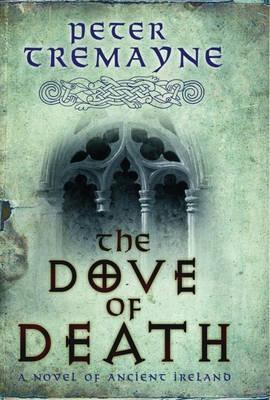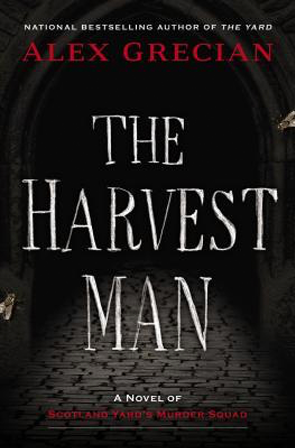I received this book for free from the library in exchange for an honest review. This does not affect my opinion of the book or the content of my review.
Source: the library
The Dove of Death
by
Peter Tremayne
historical mystery in Hardcover edition that was published by Minotaur Books on October 29, 2009 and has 369 pages.
Explore it on Goodreads or Amazon
Other books by this author which I have reviewed include Valley of the Shadow, The Chalice of Blood, Murder Most Medieval: Noble Tales of Ignoble Demises, Behold a Pale Horse, The Seventh Trumpet, Atonement of Blood, The Second Death
Twentieth in the Sister Fidelma historical mystery series set in 7th century Ireland and revolving around a religious woman who happens to hold a law degree. This particular story takes place in 670 A.D. in what we now know as present-day Brittany.
My Take
There’s a slight variation on this particular installment in the series in that Fidelma is investigating a series of raids and murders in a country where she doesn’t know the language or the laws. Nor does she have any real standing except that she is the sister of the King of Muman. I suspect the troubles Fidelma runs into here are why I had such a difficult time getting into this story.
Well, that, and Tremayne was slinging the clues around left, right, and center. Every other chapter, I was changing my mind as to who dun it. At least until the clues were piled so high, I couldn’t possibly miss! A rather clever plan…if only Fidelma hadn’t shown up. Talk about hoist with your own petard!…snicker…
I do love the so-very logical arguments Fidelma brings to bear against obnoxious, know-it-all religious and authority figures. It’s such a treat when she counters anything they say with logic which they can’t refute. Stickin’ it to the man, sister!
The Story
On their way home to Ireland after meeting up with her cousin, Bressal, Fidelma and Eadulf jump overboard to avoid a murderous pirate captain and stumble into a plot to discredit the local lord.
Rescued by Brother Metellus, they finally reach the abbey of Gildas whose abbot scorns women religeuse and, thankfully, Fidelma, Eadulf, and Brother Metellus end up at Brilhag, Lord Canao’s fortress looking for answers and justice only to run up against a household of suspicious characters.
Very suspicious considering that the pirates who took over the Barnacle Goose were flying a banner that displayed the Canao symbol of a dove and are attempting to hide a sailing ship…
The Characters
Sister Fidelma is a princess of Muman, one of five kingdoms in Ireland. She trained as a dalaigh, a lawyer, and entered religious orders as it seemed the thing to do. Fildema is now questioning that decision but is holding off on telling Brother Eadulf, her husband. Poor Eadulf, a Saxon monk and a lawyer in his land, he is hoping they’ll take some time off to spend with their son, Alchú and retire to a small monastery for a few years. Bressal is Fidelma’s cousin and is her brother, King Cólgu’s, ambassador setting up a trade agreement with King Alain Hir of Bro-Waroch (Brittany).
Brother Metellus is a Benedictine monk from Rome who has been “exiled” to Hoedig to minister to the hundred or so people on the tiny island. Seems Metellus needs a lesson in humility and absolute obedience. At least so Abbot Maelcar believes.
Those who make up the household at Brilhag include Lord Canao currently hunting with the king; his son and daughter: Macliau and Trifina; Bleidbara, commander of Lord Canao’s bodyguard; Boric, a tracker; Argantken, Macliau’s mistress; Iarnbud, Lord Canao’s bretat (a judge); and, Iuna, a fosterling who prefers to work as the house stewardess.
Lastly, there is Riwanon, queen and wife to King Alain, and Budic, the king’s son.
The Cover and Title
The cover is rather understated with its tone-on-tone browns, a band of Celtic knotwork running vertically on either side of the front cover with an inset “window” also bordered in the knotwork framing a sailing ship with a dove carved into the prow sporting vertically striped red and white sails running across a turquoise sea alongside high cliffs. The nearest cliff sports a standing cross of stone carefully carved with a haunting symbology. It’s a beautiful day with birds circling against a blue, blue sky, a bit of cloud rising up the horizon.
The title is accurate enough for all the troubles are due to The Dove of Death.















